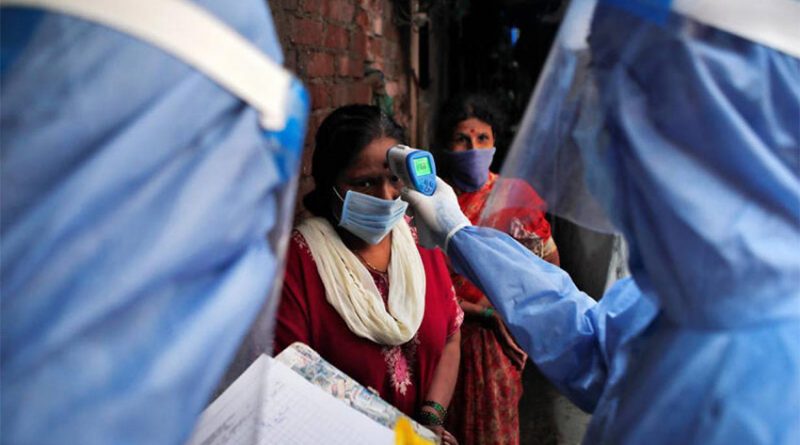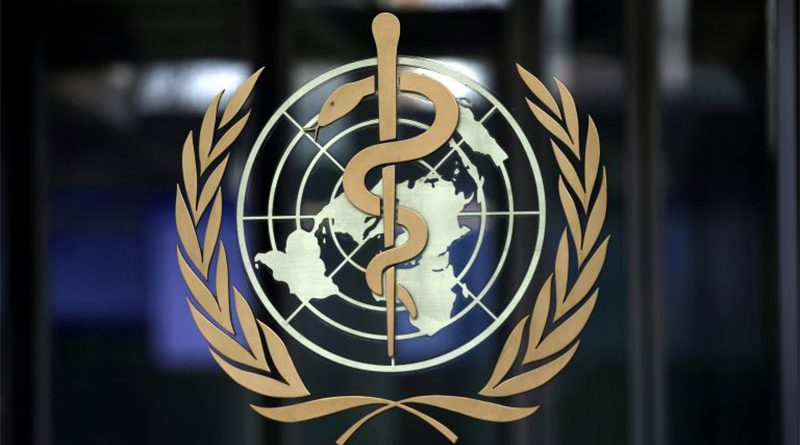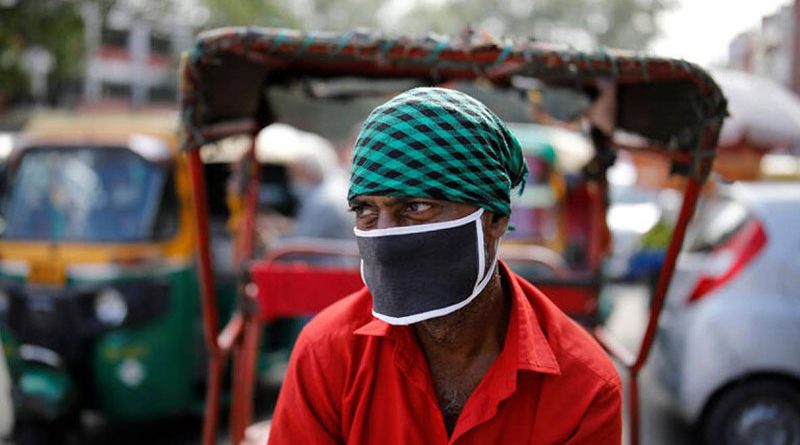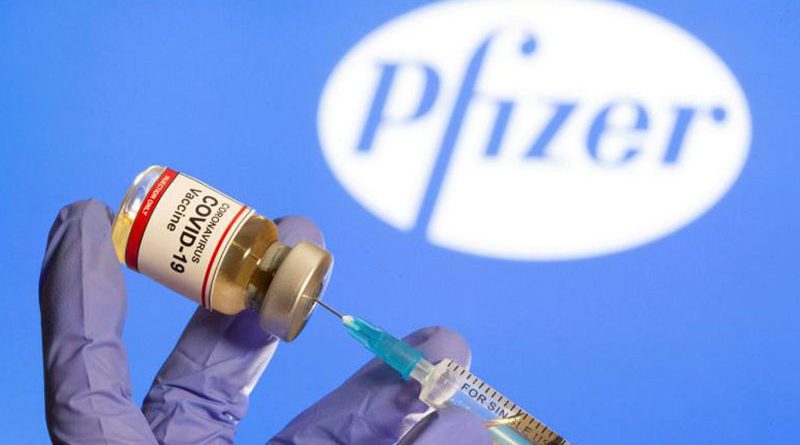THE global scheme to deliver COVID-19 vaccines to poorer countries faces a “very high” risk of failure, potentially leaving nations home to billions of people with no access to vaccines until as late as 2024, internal documents say.
The World Health Organization’s COVAX programme is the main global scheme to vaccinate people in poor and middle-income countries around the world against the coronavirus. It aims to deliver at least 2 billion vaccine doses by the end of 2021 to cover 20% of the most vulnerable people in 91 poor and middle-income countries, mostly in Africa, Asia and Latin America.
But in internal documents reviewed by Reuters, the scheme’s promoters say the programme is struggling from a lack of funds, supply risks and complex contractual arrangements which could make it impossible to achieve its goals.
“The risk of a failure to establish a successful COVAX Facility is very high,” says an internal report to the board of Gavi, an alliance of governments, drug companies, charities and international organisations that arranges global vaccination campaigns. Gavi co-leads COVAX alongside the WHO.
The report and other documents prepared by Gavi are being discussed at Gavi’s board meetings on Dec. 15-17.
The failure of the facility could leave people in poor nations without any access to COVID-19 vaccines until 2024, one of the documents says.
The risk of failure is higher because the scheme was set up so quickly, operating in “uncharted territory”, the report says.
“Current risk exposure is deemed outside of risk appetite until there is full clarity on the size of risks and possibilities to mitigate them,” it says. “It, therefore, requires intensive mitigation efforts to bring the risk within risk appetite.”
Gavi hired Citigroup last month to provide advice on how to mitigate financial risks.
In one November 25 memo included in the documents submitted to the Gavi board, Citi advisors said the biggest risk to the programme was from clauses in supply contracts that allow countries not to buy vaccines booked through COVAX.
A potential mismatch between vaccine supply and demand “is not a commercial risk efficiently mitigated by the market or the MDBs,” the Citi advisors wrote, referring to multilateral development banks such as the World Bank.
“Therefore it must either be mitigated through contract negotiation or through a Gavi risk absorption layer that is carefully managed by a management and governance structure.”
Asked about the documents, a Gavi spokesman said the body remains confident it can achieve its goals.
“It would be irresponsible not to assess the risks inherent to such a massive and complex undertaking, and to build policies and instruments to mitigate those risks,” he added.
The WHO did not respond to a request for comment. In the past, it has let Gavi take the lead in public comments about the COVAX programme.
Citibank said in a statement: “As a financial advisor, we are responsible for helping Gavi plan for a range of scenarios related to the COVAX facility and supporting their efforts to mitigate potential risks.”
SUPPLY DEALS
COVAX’s plans rely on cheaper vaccines that have so far yet to receive approval, rather than vaccines from frontrunners Pfizer/BioNTech and Moderna that use more expensive new mRNA technology. The Pfizer vaccine has already been approved for emergency use in several countries and deployed in Britain and the United States, and the Moderna vaccine is expected to be similarly approved soon.
COVAX has so far reached non-binding supply agreements with AstraZeneca, Novavax and Sanofi for a total of 400 million doses, with options to order several hundred million additional shots, one of the Gavi documents says.
But the three companies have all faced delays in their trials that could push back some possible regulatory approvals to the second half of 2021 or later.
This could also increase COVAX’s financial needs. Its financial assumptions are based on an average cost of $5.20 per dose, one of the documents says.
Pfizer’s vaccines costs about $18.40-$19.50 per dose, while Moderna’s costs $25-$37. COVAX has no supply deals with either of those firms. Nor is it prioritising investment in ultra-cold distribution chains in poor countries, necessary for the Pfizer vaccine, as it still expects to use mostly shots which require more conventional cold storage, one of the Gavi documents says.
On Tuesday a WHO senior official said the agency was in talks with Pfizer and Moderna to include their COVID-19 vaccines as part of an early global rollout at a cost for poor countries possibly lower than current market prices.
Other shots are being developed worldwide and COVAX wants to expand its portfolio to include vaccines from other companies.
Rich countries, which have booked most of the currently available stocks of COVID-19 vaccines, are also planning to donate some excess doses to poor countries, although is not clear whether that would be through COVAX.
FINANCIAL PRESSURE
To meet its target of vaccinating at least 20% of people in poor countries next year, COVAX says it needs $4.9 billion in addition to $2.1 billion it has already raised.
If vaccine prices are higher than forecast, supply is delayed or the additional funds are not fully collected, the facility faces the prospect of failure, the documents say.
So far Britain and European Union countries are the main donors to COVAX, while the United States and China have made no financial commitments. The World Bank and other multilateral financial institutions are offering cheap loans to poor countries to help them buy and deploy vaccines through COVAX.
The facility is issuing vaccine bonds which could raise as much as $1.5 billion next year if donors agreed to cover the costs, one of the Gavi documents says. COVAX is also receiving funds from private donors, mainly the Bill and Melinda Gates Foundation.
But even under the best financial conditions, COVAX could still face failure, because of disproportionate financial risks caused by its complex deal-making process.
COVAX signs advance purchase contracts with companies on vaccine supplies that need to be paid for by donors or receiving countries that have the means to afford them.
But under clauses included in COVAX contracts, countries could still refuse to buy pre-ordered volumes if they prefer other vaccines, or if they manage to acquire them through other schemes, either faster or at better prices.
The facility could also face losses if countries were not able to pay for their orders, or even if herd immunity were developed too quickly, making vaccines no longer necessary, the Citigroup report said. It proposed a strategy to mitigate these risks including through changes in supply contracts.
Source – Thomson Reuters Foundation.
THE World Health Organization is looking at new financial instruments to help to fill a $28 billion funding shortfall for tools to fight COVID-19, a senior official said on Tuesday.
The WHO and GAVI vaccine alliance aim to provide poor and middle-income countries with diagnostic tests, drugs and vaccines through a fund known as the Access to COVID-19 Tools (ACT) Accelerator, set up last April.
Bruce Aylward, a senior WHO adviser and its ACT coordinator, said that new financing mechanisms – including concessional loans and catastrophe bonds – were discussed at a meeting of the ACT facilitation council on Monday, co-chaired by Norway and South Africa.
“Right now financing is what stands between us and getting out of this pandemic as rapidly as possible,” he told a U.N. briefing in Geneva. “It’s a real challenge in today’s fiscal environment despite the fact that this is the best deal in town,” Aylward said, referring to the ACT Accelerator facility. “This will pay itself off in 36 hours once we get trade and travel moving again.”
Aylward said that the WHO and partners were seeking to build a diversified portfolio of vaccines to meet its target of delivering 2 billion doses by the end of 2021.
“We need to make sure that we hedge our bets,” he said.
The agencies are in talks with Pfizer and Moderna to include their COVID-19 vaccines as part of an early global rollout “at prices appropriate to populations we are trying to serve”, he said.
Aylward said he saw a “strong commitment” on the part of Pfizer CEO Albert Bourla to set prices at the right level for global use. Aylward expected some news on more manufacturers joining the list of providers to the COVAX vaccine facility in coming weeks, he said.
If vaccines that have been developed by China or Russia meet international standards for efficacy and safety, they would be considered for inclusion, he said.
Canada has pledged to spend C$485 million ($380 million) to support COVID-19 tests, treatments and vaccines in low- and middle-income countries, including antibody treatments, International Aid Minister Karina Gould said on Monday.
Aylward said the gaps were most acute for providing COVID therapeutics to patients in developing countries, especially new drugs such as monoclonal antibodies, “one of the most promising areas” but which remain expensive.
As clinical trials continue, WHO and partners are looking at expanding manufacturing capacity to produce monoclonal antibodies at scale for low-income countries and have the procurement financing to deliver them, he added.
Source – Thomson Reuters Foundation.
ABOUT half of the wage earners in Colombia found themselves in the informal economy last year—working unregulated jobs with flexibility, but also, minimal social protection. Yet although rates have steadily declined, informality has remained a weakness. “Before the pandemic, we were in a fragile situation, economically,” says Mauricio Quiñones Domínguez, a Medellín-based economist.
Then COVID-19 hit. The hard-hit country, previously strapped with one of the highest unemployment rates in Latin America, has seen joblessness soar to an unprecedented 21.2% (It now hovers around 16%, although ‘real’ unemployment could be higher.) Informality is expected to follow, reversing years’ worth of effort to formalize more sectors.
“That fragility has only gotten worse,” adds Domínguez. “The prediction is that the informality will increase because fundamentally we don’t have a policy for welfare strong enough to support this kind of work, which is massive.”
The diverse range of informal workers—from vendors to couriers—was ill-prepared for a prolonged public health crisis. Women and poorer populations are overrepresented. Nearly half has about three months of savings, compared to seven per cent of formal workers. And notable differences lie in mental and physical well-being.
But this phenomenon isn’t limited to Colombia. The United Nations reports an estimated 1 billion informal workers are nearing poverty after the COVID-19 outbreak. And while countries chart recovery strategies, investment thus far has largely targeted formal employees, overlooking a growing critical mass.
Before the pandemic, Domínguez and others at PEAK Urban—an international research initiative based at the University of Oxford—had studied various ways informal sectors interact in cities. Now facing an existential crisis, their work sheds new light on how these sectors are coping, and what can be done to ensure their livelihoods aren’t forgotten.
***
Nobukhosi Ngwenya, a PEAK researcher in Cape Town, South Africa, was investigating informal settlements when lockdown started. Like elsewhere, a moratorium on evictions was announced, providing cursory relief. But that didn’t stop harm from ensuing.
“The occupiers who were employed have lost their income, heightening food insecurity both for them and their extended family,” says Ngwenya. “It also impacted the spaza shop [informal convenience shops] owners as clients decreased.” And although residents may consider traders essential, many were unable to get permits during the lockdown.
As in Colombia, informal traders in Cape Town (predominantly women) did not qualify for substantial government aid due to prerequisites, like tax clearance and bank statements. Ngwenya argues that social grants must find their way to them, but targeted delivery is difficult. “We have an idea, but we actually do not know what, for example, the demand for housing is and the nature of that demand,” she says.
In India, a short window before March’s national lockdown began sent informal workers reeling. Bhawani Buswala, an Oxford-based PEAK researcher, heard from e-rickshaw drivers in Delhi operating outside regulatory frameworks. “In May, the Delhi government announced a 5000 INR (£50) one-time financial assistance to e-rickshaw drivers,” says Buswala. “But many found it difficult to avail this assistance.”
Loans on batteries accrued interest, costing six times the assistance, which dried up months ago. Ridership collapsed and has not yet recovered. For one driver, Buswala says the combined impact will be long-lasting. “The city has started to unlock,” he said. “But his e-rickshaw is chained up, the battery is long dead, and the debt is becoming heavy.”
***
While a discussion around measures like universal basic income has accelerated worldwide, researchers argue the outbreak should alert policymakers to the precariousness of informality and spurn them into addressing root causes.
Data could certainly help. The pandemic has encouraged financial inclusivity, for example, as payments went virtual, generating huge new swaths of information to analyse. In another, Domínguez used Google Maps Street View to plot informal storefronts. “When we talk about informality, we focus on the person and self, but there are also informal businesses with no regulation that affect payment,” he says.
But there are two persistent challenges, says Juan Carlos Duque, a Medellín-based PEAK researcher. The first is optimizing distribution. “We have the economic resources to help, but the system we have in place to distribute them is a mess,” he adds.
The second is changing perceptions: informality can exist as an innovative labour pool available to marginalized populations, and formality shouldn’t equate to bureaucracy. “For many informal workers, formal means more problems: taxes, responsibilities, paperwork,” Duque adds. “If that thinking doesn’t change, then transitioning will be difficult.”
Due to its nature, Duque says informality is stigmatized. (Think “shadow economy” or “black market.”) But this misconception, buttressed by deficient data, leads governments to overlook what has long been an essential piece in the global economic puzzle. A better understanding of the devastating wake of COVID-19 could help build back a stronger safety net.
“We have to depoliticize the decision-making process,” Duque stressed. “If you put science in that, it’ll be much easier to show the reasons why you can make some decisions—and also the connections you cannot see in other ways.”
Source – Thomson Reuters Foundation.
BRITAIN’S medicine regulator has advised that people with a history of significant allergies do not get Pfizer-BioNTech’s COVID-19 vaccine after two people reported adverse reactions on the first day of rollout.
Starting with the elderly and frontline workers, Britain began mass vaccinating its population on Tuesday, part of a global drive that poses one of the biggest logistical challenges in peacetime history.
National Health Service medical director Stephen Powis said the advice had been changed after two NHS workers reported anaphylactoid reactions associated with receiving the vaccine. They were among the thousands who received the shot on Tuesday.
“As is common with new vaccines the MHRA (regulator) have advised on a precautionary basis that people with a significant history of allergic reactions do not receive this vaccination after two people with a history of significant allergic reactions responded adversely yesterday,” Powis said.
“Both are recovering well.”
The MHRA said it would seek further information and was investigating as a matter of priority, and Pfizer and BioNTech said they were supporting the MHRA’s investigation.
Last week Britain’s Medicines and Healthcare products Regulatory Agency (MHRA) became the first in the world to approve the vaccine, developed by Germany’s BioNTech and Pfizer, while the U.S. Food and Drug Administration (FDA) and European Medicines Agency (EMA) continue to assess the data.
“Last evening, we were looking at two case reports of allergic reactions. We know from the very extensive clinical trials that this wasn’t a feature,” MHRA Chief Executive June Raine told lawmakers.
ALLERGIC REACTION
Pfizer has said people with a history of severe adverse allergic reactions to vaccines or the candidate’s ingredients were excluded from their late-stage trials, which is reflected in the MHRA’s emergency approval protocol.
The new MHRA guidance, sent out to health professionals, said a much broader segment should not take the vaccine.
“Any person with a history of a significant allergic reaction to a vaccine, medicine or food (such as the previous history of anaphylactoid reaction or those who have been advised to carry an adrenaline autoinjector) should not receive the Pfizer BioNtech vaccine,” it said.
It also said resuscitation facilities should be available for all vaccinations.
Britain is first rolling out the vaccine to the over-80s, those in care homes, carers and health staff. Food allergies are less common in older people, and both reactions happened in health workers rather than the elderly.
“Severe allergic reactions to vaccines are unusual but staff administering vaccines are always trained and equipped to deal with them in the event they occur,” Adam Finn, professor of paediatrics at the University of Bristol, said, adding the advice was a “sensible” precaution until more experience with the vaccine was gathered.
In the United States, the FDA released documents on Tuesday in preparation for an advisory committee meeting on Thursday, saying the Pfizer vaccine’s efficacy and safety data met its expectations for authorization.
The briefing documents said 0.63% of people in the vaccine group and 0.51% in the placebo group reported possible allergic reactions in trials, which Peter Openshaw, Professor of Experimental Medicine at Imperial College London, said was a very small number.
“The fact that we know so soon about these two allergic reactions and that the regulator has acted on this to issue precautionary advice shows that this monitoring system is working well,” he said.
Source – Thomson Reuters Foundation.




